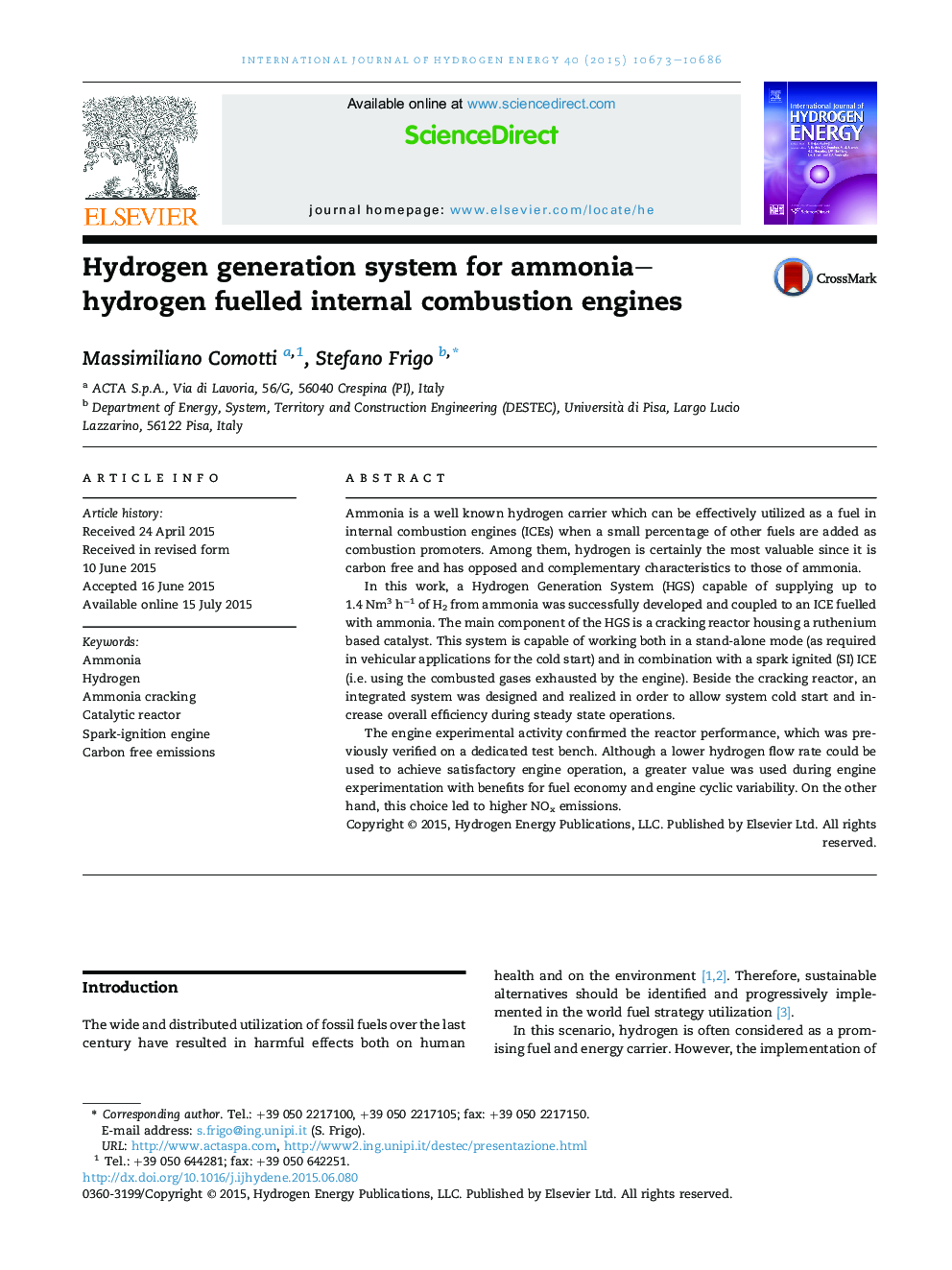| Article ID | Journal | Published Year | Pages | File Type |
|---|---|---|---|---|
| 1279118 | International Journal of Hydrogen Energy | 2015 | 14 Pages |
•A hydrogen generation system (HGS) has been designed and realized.•The HGS is based on an ammonia cracking reactor.•A 4-stroke SI engine has been modified to be fuelled with ammonia and hydrogen.•The HGS has been coupled to the SI engine demonstrating the whole effectiveness on a dedicated experimental activity.•Engine cyclic stability and NOx emission increase increasing the hydrogen to ammonia energy ratio.
Ammonia is a well known hydrogen carrier which can be effectively utilized as a fuel in internal combustion engines (ICEs) when a small percentage of other fuels are added as combustion promoters. Among them, hydrogen is certainly the most valuable since it is carbon free and has opposed and complementary characteristics to those of ammonia.In this work, a Hydrogen Generation System (HGS) capable of supplying up to 1.4 Nm3 h−1 of H2 from ammonia was successfully developed and coupled to an ICE fuelled with ammonia. The main component of the HGS is a cracking reactor housing a ruthenium based catalyst. This system is capable of working both in a stand-alone mode (as required in vehicular applications for the cold start) and in combination with a spark ignited (SI) ICE (i.e. using the combusted gases exhausted by the engine). Beside the cracking reactor, an integrated system was designed and realized in order to allow system cold start and increase overall efficiency during steady state operations.The engine experimental activity confirmed the reactor performance, which was previously verified on a dedicated test bench. Although a lower hydrogen flow rate could be used to achieve satisfactory engine operation, a greater value was used during engine experimentation with benefits for fuel economy and engine cyclic variability. On the other hand, this choice led to higher NOx emissions.
